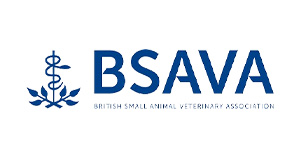A Bulls MOT
Published on: Oct 13, 2021
This week I was out on a farm, giving some special attention to one of the most important animals on any cattle farm – the bull!
Bulls need this special attention, particularly if they reside on beef farms, as once per year they have an incredibly important job to do. They are tasked with getting all of the cows (or as I like to call them, ‘girlfriends’) pregnant, so that they have a calf to rear for the following year. On average, a bull would be expected to get 90% of all of his girlfriend’s pregnant in a 9-week period – in other words, just less than 1 per day – tough work for any male!
To ensure that a bull will go out and perform to the best of his ability, each year we put them through a bull service and MOT. The bulls I visited this week were just getting ready for their first ever year of work, having just reached maturity at an age of 2 years old. These bulls were Charolais breed; a large, white breed of cattle originally from Eastern France – known for their large frame, heavy muscling but mild temperament. The bulls I went to see were not fully grown, weighing only about 600 kilograms, but fully mature males can reach almost two tonnes!
The day started off by meeting the young chaps, they were boisterously playing in a yard much like a group of teenage boys, but when the farmer entered the yard, they quickly calmed down, as at this age he is often seen by the young bulls as the dominant male. After a little bit of stubbornness, they were walked around to the cattle handling facilities, so that I could perform my various jobs and inspections; this equipment is absolutely vital on all livestock farms, as a small and innocent movement from an animal of this size can result in major injury for humans.
I gave each bull a thorough physical inspection; eyes, teeth, heart function, lung function, checking bodyweight and checking feet – if problems with any of these were found, I would need to fix these before the bull could pass this part of his inspection. Fortunately, all of these areas were passed with flying colours by all of the young bulls.
Having established all of these areas were ok, I would now have to further inspect the parts of a bull’s anatomy that are most crucial for the job he is tasked with. If deemed all physically normal, a sample is then collected for microscopic analysis, in which I check everything is swimming strongly in the correct direction. Once again, everyone passed with flying colours!
Finally, each of these bulls would receive a bit of ‘bling’ in the form of a nose-ring. This is a very important process for a bull for many reasons, but mostly for safety. Having a ring in the nose makes the bull easily identifiable for both the farmer and members of the public, it also acts as a ‘safety net’ if the bull was to turn nasty, as if the ring is pulled, the bull will concentrate on this sensation rather than whatever else it has decided to do, and this has certainly saved some lives. We perform this procedure under local anaesthesia, so could be considered less painful than when a person has a nose piercing!
Overall, this was a very satisfying ‘day at the office’ for me, knowing that these bulls will soon be the fathers of many calves! As you can see from the picture, the bulls are also happy, tucking in to some hay after their MOTs and nose piercings and will no doubt be raring to meet their new girlfriends!


Author –
Charlie Neale
Learn how to optimize bull fertility and health through regular MOTs. Discover the essential components of a bull health check and the importance of maintaining bull well-being for successful breeding.
#Bulls #Cattle #Breeding #MOT #HealthCheck #Fertility #FarmManagement #AnimalHealth #Veterinary











